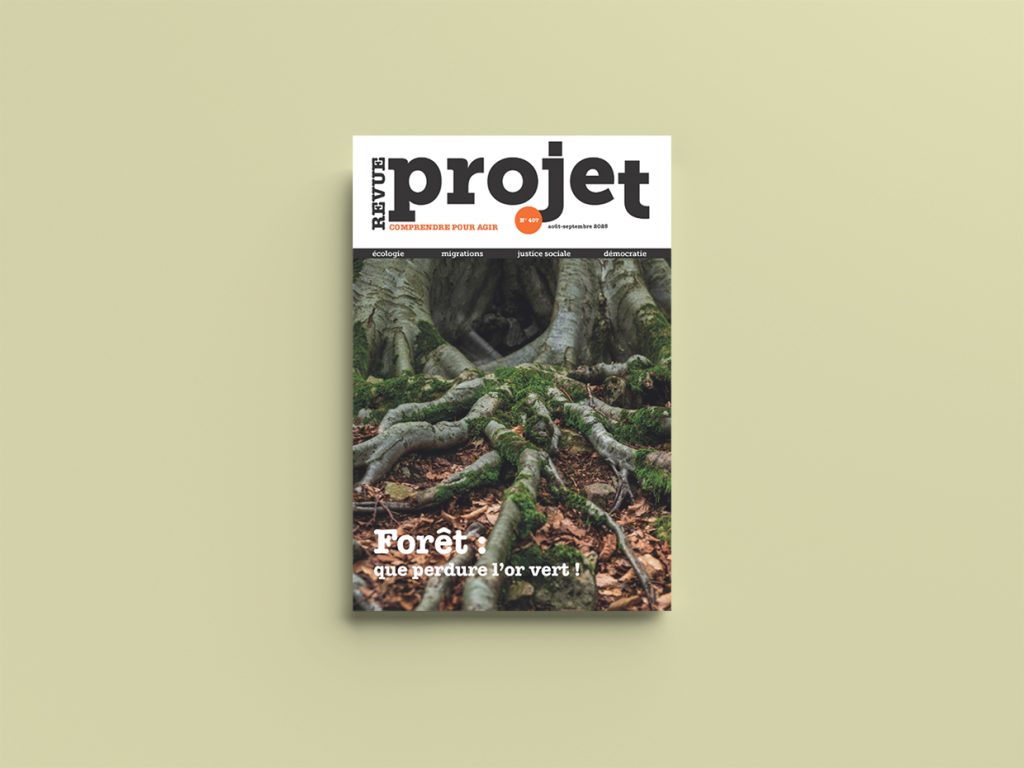Why forest restoration projects are counterproductive; how citizens are mobilizing to protect Europe’s woodland from the right; and why diversity is the solution to sustainable timber.
In an issue of Revue Projet (France) exploring our diverse relationships to forests, Alain Karsenty writes on the ‘mirage of offsetting’: the idea that planting or protecting forests can compensate for carbon emissions. Companies like talking about ‘carbon neutrality’ because it allows them ‘to avoid fundamentally questioning their economic model’. But such projects do not deliver on their promises.
One issue is time: trees need decades to lock away the carbon they are planted to offset. Attempts to resolve this by planting fast-growing species make things worse in the long run, because such species have shorter lifespans – and so store carbon for less time. Unfortunately, ‘more than half of the world’s current or planned forest “restoration” projects are of this type’, writes Karsenty.
Other drawbacks to offsetting include carbon leakage due to tensions with local stakeholders over land use, and the increasing vulnerability of forests to wildfires, droughts, and pests. Financial incentives to encourage governments to implement sustainable forestry policies are also problematic. To work, they must account for the ‘composite nature of states, where political decisions are not the product of rational cost-benefit assessment, but subject to vested interests and corruption’. A consistent framework for independent experts to evaluate projects is also essential.
Ultimately, says Karsenty, offsetting will not be enough to stop deforestation. Policies such as lower taxes on certified ‘zero deforestation’ products will be needed to encourage consumers to change their habits.

Mobilizing for the Green Deal
In Europe, this kind of political will is shaky. Kelsey Perlman looks at the problems besetting the European Green Deal, launched in 2019 as an ambitious roadmap to make the EU the first carbon-neutral continent by 2050. Its objectives are to reduce greenhouse gas emissions and protect the EU’s natural land. But its pillars are being undermined by ‘economic pressures, geopolitical tensions and anti-regulation rhetoric,’ all of which are exacerbated by the far-right gains in the 2024 European elections.
For example, despite the widespread popularity of the EU Deforestation Regulation among EU citizens, an ‘alliance between far-right groups and the EPP’ is attempting to force the European Parliament to water it down to the point of ‘stripping it of its substance’. The future of the Regulation remains undecided.
Conservative and far-right MEPs, in cahoots with the European forestry industry, are also trying to torpedo a law that would improve the collection of forestry data in Europe. Industry lobbies, Perlman claims, ‘do not want the debate on industrial forest management to be informed by more accurate data’.
Meanwhile, attempts to adopt legislation obliging Member States to restore degraded ecosystems – rather than simply preserving them – faced fierce resistance from the EPP as well as Sweden, Finland, Estonia and other countries with large forestry sectors. Fuelled by the anti-environmentalism of the far right, this ‘creeping deregulation’ poses a serious threat to the ‘ambition of ensuring Europe’s environmental policies are commensurate with the current climate and biodiversity emergencies’.
At the grassroots level, writes Perlman, citizens are mobilizing to protect Europe’s forests. One such initiative is Green-Forest, which aims to improve forestry management and protect woodland in the Vercors massif in France. Its founder, Benoît Coulée, explains that one of the obstacles to implementing sustainable practices in France is the fragmented nature of land ownership – with forests often divided into numerous small plots (four hectares on average). The long lifespan of forestry projects, which can take decades to yield results, makes it difficult to coordinate with owners given that land may have changed hands multiple times during that time.
One way to prevent sustainable projects becoming bogged down in disputes, and to cut down on onerous administrative work for forest managers – ‘who must maintain relationships with thousands of different owners’ – is the creation of groupements forestiers. These are run by a legal representative with sole responsibility for making decisions.
Originally created several decades ago by families ‘to avoid the pitfalls of joint ownership and inextricable deadlocks’, groupements forestiers have been adopted by Green-Forest and other citizens’ groups, who use them to manage forests in an environmentally friendly way. Green-Forest buys woodland from private owners in the Vercors to create an area of several hundred hectares that can be sustainably managed in an efficient and streamlined manner, so that ‘forestry and ecological interests take precedence over economic ones’.
Mixed forests, sustainable timber
Another association working to encourage a more sustainable approach to forestry management is Pro Silva. Its director, Antoine Cadoret, describes its goal as ‘to promote mixed-species, continuous-cover forestry (MCCF) based on an irregular approach that respects the natural processes of forest ecosystems’. MCCF is already enshrined in the forestry code in the Walloon region of Belgium, as well as in Slovenia and Switzerland. But its adoption in France has again been hampered by the fact that 75 percent of France’s forests are owned by small landowners.
The goal of MCCF is to maintain the forest as an irregularly structured, diverse, and ‘highly functional ecosystem’ by cutting down small numbers of carefully selected trees on a rolling basis instead of clearcutting whole areas and replanting a single species. The benefits are both environmental, in terms of increased biodiversity, and commercial, because mixed forests produce higher-quality timber and become more resilient to natural disasters and pests.
With demand for wood as a sustainable resource rising, the current timber production model has reached its limits. As Cadoret says, ‘in intensive forestry, there’s a belief that the forest must adapt to industry’s needs. But we believe that it is industry that must adapt to what the forest is capable of providing.’

Published in cooperation with CAIRN International Edition, written by Cadenza Academic Translations.
Published 9 October 2025
Original in English
First published by Eurozine
Contributed by Revue Projet © Eurozine
PDF/PRINTPublished in
In collaboration with
Newsletter
Subscribe to know what’s worth thinking about.
Related Articles

Philosophy and the bomb
Blätter für deutsche und internationale Politik 8/2025
Karl Jaspers, Günther Anders and the nuclear dichotomy; how Israel’s allies have abandoned the Iranian opposition; and EU asylum policy ten years on from ‘Wir schaffen das’.

The decisive sex-change moment in movies, revealing a dramatic transformation, is far from reality. Transgender people face not only long assessment and surgery waiting lists but also bureaucratic hurdles when reassigning legal gender across countries, undermining their well-being and safety at a delicate time of becoming themselves.





